
http://www.iaeme.com/IJM/index.asp
139
editor@iaeme.com
International Journal of Management (IJM)
Volume 8, Issue 2, March – April 2017, pp.139–149, Article ID: IJM_08_02_016
Available online at
http://www.iaeme.com/ijm/issues.asp?JType=IJM&VType=8&IType=2
Journal Impact Factor (2016): 8.1920 (Calculated by GISI) www.jifactor.com
ISSN Print: 0976-6502 and ISSN Online: 0976-6510
© IAEME Publication
FACTORS AFFECTING THE INVOLVEMENT
OF EMPLOYEES IN STATE OWNED
ENTERPRISES (SOES) IN ACEH PROVINCE
Chairil Anwar
Expert Assistant, Faculty of Economics and Business,
Syiah Kuala University of Aceh, Indonesia
Muhammad Basyir
Expert Assistant, Faculty of Economics and Business,
Syiah Kuala University of Aceh, Indonesia
Saed Armia
Associate Professor, Faculty of Economics and Business
Syiah Kuala University of Aceh, Indonesia
Mahdani
Associate Professor. Faculty of Economics and Business,
Syiah Kuala University of Aceh, Indonesia
ABSTRACT
This study aimed to obtain empirical evidence of factors that affect involvement of
employees at PT. Jasa Raharja (Persero) Branch Aceh. There have been many
previous studies examine on this topic, but along with the passing of time and changes
in the environment that is so powerful it is necessary to reconfirm the factors that
affect JI especially in the organization of PT. Jasa Raharja (Persero) Branch Aceh.
Primary data was taken by circulating questionnaires to the company employees 98
people with census method. Data were analyzed using SEM with AMOS program
assistance. Results of the analysis showed that the independent variables OI, PF, and
Tr contribute significantly to the dependent variable JI, while the independent
variables POS and Mtv not contribute at all to the JI. Furthermore, also found that all
the independent variables have a close correlation linearly either contribute or not.
Key words: Employee involvement, Organizational Identification, Training,
Perceived organizational support, Motivation, Personality factors, SOEs
Cite this Article: Chairil Anwar, Muhammad Basyir, Saed Armia and Mahdani,
Factors Affecting the Involvement of Employees in State Owned Enterprises (SOES)
in ACEH Province. International Journal of Management, 8 (2), 2017, pp. 139–149.
http://www.iaeme.com/IJM/issues.asp?JType=IJM&VType=8&IType=2

Chairil Anwar, Muhammad Basyir, Saed Armia and Mahdani
http://www.iaeme.com/IJM/index.asp 140 editor@iaeme.com
1. INTRODUCTION
PT. Jasa Raharja (Persero) Branch Aceh is a company in the form of State Owned Enterprises
(SOEs) under the Ministry of Finance of the Republic of Indonesia. The company is engaged
in insurance, which give priority to the implementation of programs of Social Insurance and
Compulsory Insurance in line with the needs of the community. So, PT. Jasa Raharja
(Persero) (SOEs) implement Accident Insurance passenger public transit and insurance
responsibilities under the law against third parties as set forth Law No. 33 and 34 in 1964.
The employees are the pillars of the strongest and most valuable assets that contribute
significantly to the success and progress of the organization. The concept of job involvement
of employees has attracted interest and growing among experts of human resources
management. Many organizations face the challenge of managing and empower their
employees to actively contribute to a better performance.
In a turbulent economic environment today, organizations require creative and innovative
employees who can take the initiative, embrace change, stimulate innovation and address the
high uncertainty in the market. To accommodate the demand for employees, most companies
have already removed their centralized control management in the hope of promoting
flexibility and firmness as well as continuous improvements in individual and organizational
performance (Hung 2008).
Increased pressures that drive performance reforms have opened the need to examine and
improve engagement techniques work well, it will be able to solve the problem are varied and
deprivation that worsens performance. These concerns have necessitated the organization to
introduce a comprehensive reform such as performance contracts to improve efficiency and
productivity with measurable performance (Aamir A. C, 2008).
PT. Jasa Raharja (Persero) Branch Aceh continuously strive to improve the performance
of the organization in accordance with the vision and mission of the company. This would not
be realized if the employee is still not able to understand the involvement of their work in
producing the firm's output.
This study examines the factors that affect Job Involvement (JI) employees at PT. Jasa
Raharja (Persero) Branch Aceh. Researchers used the Job Involvement as the dependent
variable or variables that are affected. While the independent variable or variables considered
to affect consisting of: (1) Motivation (Mtv), (2) Organizational Identification (OI), (3)
Personality Factor (PF), (4) Perceived Organizational Support (POS), and (5) Training (Tr).
2. LITERATURE REVIEW
Job Involvement
The concept of job involvement was originally developed by Lodahl and Kejner in 1965
(Khan and Nemati, 2011; Lubakaya, 2014) which defines where the level of job involvement
self esteem is affected by the performance. According to Brown (1996) the degree to which a
person a identifies psychologically with his or here work and the importance of work to one’s
self image. Later, this concept is further elaborated by Kanungo (1982a), he tried to eliminate
the ambiguity of the concept of job involvement and improve measurement shortages that
occurred in previous research. He defines a job involvement as an individual's belief in his
work now and he also stated that the involvement of labour acts as a catalyst to meet the
needs of individuals today.
Furthermore, Hung (2008) states that the involvement of cognitive work is the fulfilment
of a person that helps him to work harder so as to improve its performance. Indeed, the level
of job involvement is higher among members of the organization are important in improving

Factors Affecting the Involvement of Employees in State Owned Enterprises (SOES) in
ACEH Province
http://www.iaeme.com/IJM/index.asp 141 editor@iaeme.com
organizational effectiveness (Liao and Lee, 2009). Then, Lodahl and Kejner (Govender and
Parumasur 2010) divides the job involvement into four sub-dimension that include: (1)
Response to work, (2) Expressions of being job involved (3) Sense of duty towards work, and
(4) Feelings about unfinished work and absenteeism. Fourth-four sub-dimensions of these
researchers make the indicators in this study to measure job involvement variables.
Motivation and Job Involvement
In this study, it is important for us to know the definition of the term "Motivation".
Motivation is an impulse that will cause a person to perform an act in order to achieve certain
goals. Motivation comes from the word "motive" which means "encouragement" or
stimulation or "driving forces" that exist in a person (Robbins and Judge, 2008: 222-232).
According, Berman, Bowman, West and Wart (2010: 180), motivation can be defined as
"Drive or energy forces people to act with energy and perseverance towards some goals."
Based on studies Mullins (Govender and Parumasur, 2010) found that motivational factors
influence directly on the involvement of employees. Then, the research conducted by Tella,
Ayeni and Popoola (2007) found a correlation between motivation and job involvement.
There are two types of employee motivation in the workplace, ie, intrinsic motivation and
extrinsic motivation. According to the study (Herzberg, (1968) employees who have a high
intrinsic motivation in work engagement is considered as an important asset for an
organization.
Hypothesis 1
Ho1: There is no significant effect between Intrinsic motivation and job involvement of
employees in SOEs Aceh.
Ha1: There is a significant effect between Intrinsic motivation and job involvement of
employees in SOEs Aceh.
Organizational Identification and Job Invovement
Mael and Ashforth (1992), Organizational Identification (OI) as togetherness perceived role
in an organization, the success and failure of an organization can be perceived as one's own.
Organizational identification as beliefs and attitudes shared between employees and policy
makers (Dutton & Dukerich, 1991). Some researchers have studied variables organizational
identification as a mediator variable (Tastana & Gucelb, 2014; Soenen & Melkonian, 2016;
Rim, Yang, & Lee, 2016; Gok, Karatuna, and Karaca, 2015). This research predicted that OI
is a factor that can affect JI, through the influence of indicators developed by Mael and
Ashforth (1992), namely: (1) the peculiarities of the organization, (2) the prestige of the
organization, (3) competition among organizations, (4) the intra-organization competes, and
(5) the satisfaction with the organization.
Hypothesis 2
H2o: There is no significant effect between OI and job Involvement of employees in SOEs
Aceh.
H2a: There is a significant effect between OI and job Involvement of employees in SOEs
Aceh.
Personality Factors and Job Involvement
This study uses a model big five Personality Traits developed by Goldberg (1993). This
model is also known as the Five Factor Model (FFM) is a model based on a general
description of the personality (the lexical hypothesis). These descriptors are grouped together

Chairil Anwar, Muhammad Basyir, Saed Armia and Mahdani
http://www.iaeme.com/IJM/index.asp 142 editor@iaeme.com
using a statistical technique called factor analysis (e.g., the model is not based on
experimentation). This theory was analyzed extensively by psychologists, generally using five
dimensions that describe the personality and psychiatric. It consists of five factors: Openness
Personality; Conscientious Personality; Extroverted Personality; Agreeableness Personality;
and Neurotic (Emotionally Stable) Personality; and often abbreviated with OCEAN
(Matthews, Deary & Whiteman, 2003). Furthermore, a meta-analysis review of Brown
(Bozionelos, 2003) explains that there is a positive relationship between job involvement and
identification of individual employees, so the impact on employee involvement in height.
Hypothesis 3
H3o: There is no significant effect between personality factors and job Involvement of
employees in SOEs Aceh.
H3a: There is a significant effect between personality factors and job Involvement of
employees in SOEs Aceh.
Perceived Organzational Support (POS)
Perceived organizational support (POS) is an employee perception of care or attention to their
organization as a form of support in order for them to work better. Based on the POS theory
in general, that support of the organization is how far the organization appreciating the
contribution and taking care about their well-being (Eisenberger, Huntington, Hutchison, and
Sowa, 1986; Rhoades and Eisenberger, 2002; Shore and Shore, 1995). In line with the above
view, Chen et al. (2009) argues that the perception of support organisational as emotional
fulfilment by the employee to prepare their organizations to be able to appreciate their efforts
to the organization.
From some view of the above it is understood that the perception of organizational support is
reciprocal efforts initiated by the organization and its employees, so that the demands of
organizations for employees can be met and to support each other, and vice versa. Hao et al.
(2009) find POS affect the JI based relationship colleagues and guanxi network.
Hypothesis 4
H4o: There is no significant effect between POS and job Involvement of employees in SOEs
Aceh.
H4a: There is a significant effect between POS and job Involvement of employees in SOEs
Aceh.
Training and Job Involvement
According, Dessler (2003: 275) training refers to the method used to provide skills to new
employees or employees of the old. The skill set is nothing new or special that is necessary to
do the job. Based on studies conducted Bartlett, dividing the training concept into 6 variables,
namely: (1) participation in training, (2) perceived access to training, (3) motivation to learn
from the training, (4) perceived benefits of training, (5) perceived support for training, and (6)
job organizational tenure (Bartlett, 2001). Furthermore, Bartlett (Rowold, 2008) explained
that work engagement is positively influenced by subjective access of employees to
participate in training. Conduct training for employees can improve work effectively and
efficiently (Palo & Padhi, 2003). Moreover, Farhan Akhtar, Ali, Sadaqat, and Hafeez (2011);
Ooi et al. (2007) found that training could improve employee engagement.

Factors Affecting the Involvement of Employees in State Owned Enterprises (SOES) in
ACEH Province
http://www.iaeme.com/IJM/index.asp 143 editor@iaeme.com
Hypothesis 5
H5o: There is no significant effect between training and job Involvement of employees in
SOEs Aceh.
H5a: There is a significant effect between training and job Involvement of employees in
SOEs Aceh.
Figure 1 Research model
3. METHODOLOGY
Samples
Samples numbered 98 employees of PT. Jasa Raharja (Persero) Branch of Aceh, which is
drawn using the census method. This method is used because the population is relatively
small, so all employees is a research sample. Primary data were collected by distributing
questionnaires.
Measurement
Personality variable (independent variable) was measured using the big five model that
developed by Goldberg (1993), namely: (1) openness personality, (2) conscientious
personality, (3) extroverted personality, (4) agreeable personality, and (5) neurotic
(emotionally stable). Variable motivation, using the concept of intrinsic motivation of Ryan
and Deci (2000). POS Variable measured using four indicators (Rhoades & Eisenberger,
2002), (1) fairness, (2) supervisor support, (3) organizational rewards, (4) and job conditions.
OI Variable is measured using five indicators (Mael & Ashforth, 1992), namely: (1) the
peculiarities of the organization, (2) the prestige of the organization, (3) competition among
organizations, (4) The intra-organizational competition, and (5) the satisfaction with the
organization. Variable training using the opinion of Bartlett (2001), there are six indicators
measured: (1) participation in training, (2) perceived access to training, (3) motivation to learn
from the training, (4) perceived benefits from training, (5) perceived support for training, and
(6) organizational job tenure. Variable JI (dependent variables) using two indicators


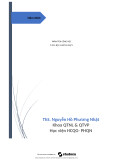

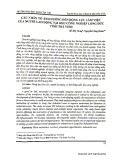
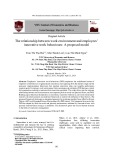
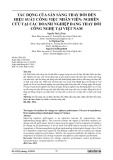

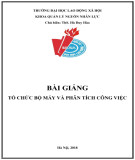
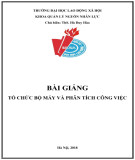

![20 câu hỏi Quản lý dự án phần mềm có đáp án [mới nhất]](https://cdn.tailieu.vn/images/document/thumbnail/2025/20251003/hieu2004haha@gmail.com/135x160/78791759734259.jpg)
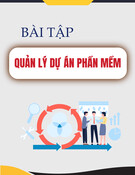

![Tài liệu Quản lý dự án: Kiến thức nền tảng toàn diện [chuẩn SEO]](https://cdn.tailieu.vn/images/document/thumbnail/2025/20250910/kimphuong1001/135x160/92631757496585.jpg)











